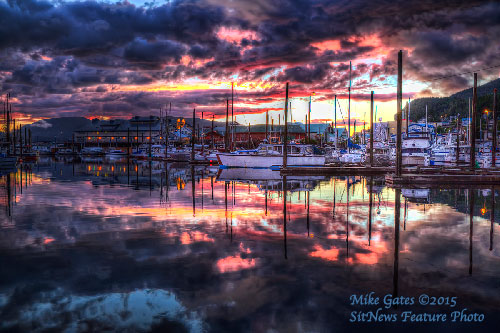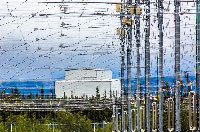 Weekly Specials
Weekly Specials |















 Contact Contact 
 Call 617-9696 Call 617-9696
 Webmail
Letters Webmail
Letters
 News Tips News Tips 
 Copyright Info Copyright Info
 Archives Archives
Quick News
Search
 Alaska Alaska
 Ketchikan Ketchikan
 SE Alaska SE Alaska
 Alaska News Links Alaska News Links
Columns
- Articles
 Dave Kiffer Dave Kiffer
 Fish
Factor Fish
Factor
 Money Matters Money Matters
Historical
Ketchikan
 June Allen June Allen
 Dave
Kiffer Dave
Kiffer
 Louise
B. Harrington Louise
B. Harrington
Ketchikan
Arts & Events
 Ketchikan
Arts Ketchikan
Arts
 Ketchikan
Museums Ketchikan
Museums
 KTN Public
Library KTN Public
Library
Sports
 Ketchikan Links Ketchikan Links
Public Records
 FAA Accident Reports FAA Accident Reports
 NTSB
Accident Reports NTSB
Accident Reports
 Court Calendar Court Calendar
 Recent Filings & Case Dispositions Recent Filings & Case Dispositions
 Court Records Search Court Records Search
 Wanted:
Absconders Wanted:
Absconders
 Sex Offender Reg. Sex Offender Reg.
 Public Notices Public Notices
Weather,
Webcams
 Today's
Forecast Today's
Forecast
 KTN
Weather Data KTN
Weather Data
 AK
Weather Map AK
Weather Map
 AK Weathercams AK Weathercams
 AK Earthquakes AK Earthquakes
TV Guide
 Ketchikan Ketchikan
Ketchikan
Phone Book
 Yellow
Pages Yellow
Pages
 White
Pages White
Pages
Government
Links
 Local Government Local Government
 State & National State & National

|
|

Saturday
September 05, 2015

|
Tongass Narrows Sunset
A colorful Thomas Basin sunset following a rainy day. (Sept. 1, 2015)
Front Page Photo By MIKE GATES ©2015
Click Here to select your Favorite Front Page Photo(s) of the Month
(Submit your photograph to be featured on the SitNews' front page. Email photo to editor@sitnews.us include your name and a brief photo description.)
Ketchikan: Steinbeck’s famous boat
hopes to sail again; The Western Flyer spent decades in SE; nearly sank here By DAVE KIFFER
- One of the most famous fishing boats is American history is currently sitting on dry land in Port Townsend waiting for yet another attempt to preserve it to begin.

Western Flyer Renovation Underway
Photo courtesy Port of Port Townsend (http://portofpt.com)
“The Western Flyer” was immortalized by Nobel Winning author John Steinbeck in his non-fiction classic “The Log from the Sea of Cortez.”
Long after Steinbeck sailed on the 75-foot seine boat in 1940, it earned a living for several decades in Southeast Alaska and was nearly destroyed when it ran aground near Thorne Bay in the early 1970s.
Seventy five years ago, Steinbeck spent six weeks traveling on “The Western Flyer” in the Sea of Cortez with his good friend marine biologist Ed Ricketts.
The plan was to spend the time collecting specimens that Ricketts could sell to marine institutions but the trip was also a necessary get away for Steinbeck who was overwhelmed by the publicity storm that had arrived with the publication of Steinbeck’s most famous work, The Grapes of Wrath, in 1939, the year before.
Ricketts had been Steinbeck’s best friend for more than a decade and is widely credited with spurring Steinbeck to add environmental elements in many of his novels. Most notably, Steinbeck immortalized Ricketts as the character “Doc” in “Cannery Row.”
Although “The Sea of Cortez” had a variety of themes, most important of which was how the work of man was affecting natural environments such as the Sea which was fed by the Colorado River and was located between Baja California and the rest of Mexico, the book also paid tribute to working boats like “The Western Flyer.”
“Some have said they have felt a boat shudder before she struck a rock, or cry when she beached and the surf poured into her,” Steinbeck wrote in his second version of the book in 1951. “This is not mysticism, but identification; man, building this greatest and most personal of all tools, has in turn received a boat-shaped mind, and the boat, a man-shaped soul. His spirit and the tendrils of his feeling are so deep in a boat that the identification is complete.”
Steinbeck made an early attempt to publish the story of the trip in 1941, but was unsuccessful, primarily because the book was released the same week the Japanese attacked Pearl Harbor and World War II began.
After the war, Steinbeck decided to rework the book and re-released it in 1951. It immediately became a classic in both environmental and travel literature. By 1951, Ricketts had died in a car/train accident in Monterrey, which cut short a proposed voyage up the British Columbia and Southeast Alaska Coast the two men had been planning as a sequel to the “Sea of Cortez.” - More...
Saturday PM - September 05, 2015
|
|
Fish Factor: Pink Salmon Catch Second Largest; Sockeyes in the Red By LAINE WELCH - Alaska’s pink salmon catch is pushing 180 million fish, making it the second largest harvest ever (219 million pinks was the previous record set in 2013).
The humpie haul has been pushed by record production in three regions – over 15 million pinks were taken at the Alaska Peninsula, compared to under one million last year. Kodiak’s record pink catch was nearing 30 million, triple last year’s take; and Prince William Sound’s harvest so far had topped a whopping 97 million pink salmon.
All that fish goes into a competitive global market and in a word, the pink market stinks. There is still a glut of pink salmon products stemming from Alaska’s record 2013 catch, and devalued currencies are bedeviling sales with overseas customers.
“We’ve had some big years backed up and that ripples through the supply chain and affects prices, and it doesn’t help that the currency markets have gone against us so badly during this time when our supply has goes up so dramatically,” said Andy Wink, Senior Seafood Analyst with the McDowell Group.
Exports typically account for 60-70 percent of Alaska’s seafood sales. Last week the Euro was priced at $1.14, down from $1.32 at the same time last year. And the Japanese Yen was at 84 cents, down from 96 cents.
“It gives you a sense of the dramatic shifts we’re seeing in the currency markets, and it has thrown such a change into the different supply relationships and the normal price ranges. It’s been very difficult,” he added.
Another huge market hit comes from the ongoing US seafood embargo by Russia - one of the biggest buyers of pink salmon roe. The roe usually accounts for 25 to 30 percent of the value of the entire pink pack, sometimes more.
“Other than Japan, Russia is our largest market for salmon roe,” said Alexa Tonkovich, International Program Director for the Alaska Seafood Marketing Institute. “Japan takes about $125 million worth of salmon roe and Russian takes about $46 million. The next closest market is China at $20 million. And if you don’t have diversified markets for a product you’re in a less powerful negotiating position.”
“There is just not another market like Russia or Eastern Europe waiting out there with a strong currency to buy our pink roe,” echoed Wink, adding “it’s easy to see how it could drag down total first wholesale value by a quarter or a third compared to averages of years past.”
Season totals for frozen and canned pinks have yet to be tallied. Cases of cans are still piled up from two years ago, keeping a downward press on prices. Alaska fishermen are getting paid on average 17 cents per pound for pinks, compared to a statewide average of 30 cents last summer. - More...
Saturday PM - September 05, 2015
|
|
Alaska Science: HAARP again open for business By NED ROZELL - Instead of falling to the dozer blade, the High Frequency Active Auroral Research Program has new life.

The antennas of the upper-atmosphere research station near Gakona now owned by the University of Alaska.
UAF photo by Todd Paris.
In mid-August, U.S. Air Force General Tom Masiello shook hands with UAF's Brian Rogers and Bob McCoy, transferring the powerful upper-atmosphere research facility from the military to the university.
You may have heard of HAARP. Nick Begich wrote a book about it. Jesse Ventura tried to bully his way past the Gakona gate during a TV episode of Conspiracy Theory. Muse recorded a live album, HAARP, at Wembley Stadium from a stage filled with antennas meant to resemble those standing on a gravel pad off the Tok Cutoff Road.
The science-fiction assertions of caribou walking backwards, human mind control and HAARP's ability to change the weather have made researchers wince. It’s hard to describe a complicated instrument that sends invisible energy into a zone no one can see.
HAARP is a group of high-frequency radio transmitters powered by four diesel tugboat generators and one from a locomotive. The transmitters send a focused beam of radio-wave energy into the aurora zone. There, that energy can stimulate a speck of the electrical sun-Earth connection about 100 miles above our heads.
Why did university higher-ups swing the door back open for the conspiracy theorists? Why not let HAARP go quietly back to boreal forest?
"Even though it's esoteric and hard to understand, it's the best," said Bob McCoy, head of UAF's Geophysical Institute, which now has the keys to the complex, located off mile 11.3 of the Tok Cutoff Road.
The facility is the best tool to study a region above Earth we know little about, McCoy said. Of three such ionospheric heaters in the world — in Norway, Russia and soon-to-be in Puerto Rico — HAARP is the "most powerful and agile of the three," according to Craig Heinselman, director of the facility in Norway.
At an interview in his office on the UAF campus, McCoy said meetings with others in the space physics community convinced him HAARP was worth saving. During a 2013 workshop with potential users who study the shell of ionized plasma that coats the planet from 40 to 600 miles over our heads, researchers said they would use HAARP if the university took it over. - More...
Saturday PM - September 05, 2015
|
Columns - Commentary
DAVE KIFFER: Dissed by POTUS - Okay, I'm pretty sure we're all a little peeved that the most important person in the universe deigns Ketchikan unworthy of even a brief stop by on his much ballyhooed visit to Alaska.
Sure, sure it would have been nice if Toby Keith had decided to layover in Ketchikan on his concert swing north but that's apparently just the way the Red Solo Cup crumbles.
Seriously, the elected official currently known as POTUS is leaving T’US down here in Our Fair Salmon City feeling a little like PO relations.
Okay, I get that he had to go to Anchorage.
Everyone has to go to Los Skanchorage. I'm surprised that Alaska Airlines hasn't decided to make it a hub for all flights. It would be sooo fun to go Ketchikan-Wrangell-Petersburg-Juneau-Yakutat-Cordova-Anchorage-Seattle on our trips to Hawaii or Cabo in the Fall.
- More...
Saturday PM - September 05, 2015
SUSAN STAMPER BROWN: Obama's Alaska Global Warming Field Trip - President Obama told some whoppers the size of Mt. McKinley (I mean Denali) about global warming while he was here in Alaska.
At a climate change conference in Anchorage, Obama attempted to scare the long-johns off Alaskans he obviously thinks are stupid when he predicted coming "submerged countries, abandoned cities... entire industries of people who can't practice their livelihoods, desperate refugees seeking the sanctuary of nations not their own, and political disruptions that could trigger multiple conflicts around the globe."
Honestly, it sounded like he was describing the effects of his policies thus far, but I won't go there. - More...
Saturday PM - September 05, 2015
JEFF LUND: Best burger of the summer
- I’m not versed in all things kitchen, so I’m not really qualified to make food judgments that people would take very serious.
That said, I am an expert at figuring out what I like and one thing I do like is a good burger. Not that anyone purposely seeks out bad burgers just to switch things up, but a lot of things have to go right in crafting a burger worth writing about.
There is the light toasting of the bun. The burger to bun ratio. The quality of the bun and burger. But even if those things are in place, the burger can still fail. Some joints insist on ruining a solid foundation with a secret sauce that is publicly poor. Sure it’s perfect for someone else, but I’m not going to subject myself to something I don’t like just because someone else tells me it’s good and right. That’s for elections, right? - More...
Saturday PM - September 05, 2015
DANNY TYREE: Labor Day: 12 Random Thoughts - Local schools started in August, I haven't checked in on the MDA Telethon since Jerry Lewis was ousted as host and my family has no particular Labor Day traditions; but I do find myself pondering the holiday that salutes the accomplishments of America's workers.
And, of course, both labor and management get skewered when my mind starts wandering.
1. Labor Day is touted as "the unofficial end of summer," which callously steals a lot of the thunder of the autumnal equinox. Why does summer get to double dip? We don't have both official and unofficial ends of Christmas or mosquito season or prom season. ("Addison, your corsage lost a petal. I don't care if the big night is Saturday — I'm impounding your white clothing right now!") - More...
Saturday PM - September 05, 2015
WILL DURST: Laborsome Days - Labor Day. The last plastic souvenir sports bottle of lemonade on the dying coals of summer. Not so much a festive celebration as a beacon for the halfway point between 4th of July and Thanksgiving. The spot on the calendar where fireworks switch to Jack-O-Lanterns. Hot dog relish to cranberries. Sweaty bangs and frozen nostril hairs.
Because our biological clocks are still running on elementary school time, the first Monday of September is noted mostly for being a transition. A blackboard trigger rekindling memories of that desultory trudge back to whatever scholastic institution we were assigned. A return to numbers and objectives and lockers and reading lists and hiding from the assistant principal who roamed the halls like two dobermans in heat. - More...
Saturday PM - September 05, 2015
|

Political Cartoon: Canadian Wall
By Steve Sack ©2015, The Minneapolis Star Tribune
Distributed to subscribers for publication by Cagle Cartoons, Inc.
|
Viewpoints
Commentary
Opinions/Letters
Basic
Rules &
Freedom of Speech
Questions, please contact
the editor at editor@sitnews.us or call 617-9696
Sitnews reserves the right to edit.
 Inuit Circumpolar Council Response to the topic of Global Climate Change By James Stotts, ICC-Alaska President - Climate change poses a tremendous risk to the food security of Alaska’s indigenous peoples, and changes in state and federal policies could go a long way toward mitigating that risk and averting a potential crisis. Inuit Circumpolar Council Response to the topic of Global Climate Change By James Stotts, ICC-Alaska President - Climate change poses a tremendous risk to the food security of Alaska’s indigenous peoples, and changes in state and federal policies could go a long way toward mitigating that risk and averting a potential crisis.
Climate change has already impacted traditional food sources, and will likely create more disruption. Changing weather patterns have limited the ability to go hunting. Sea ice has diminished and become more unstable. Species of wildlife have changed their migration patterns. Melting permafrost is reshaping the environment. Changing ocean conditions and rising water temperatures are altering fish runs. Foraging locations continue to change or even diminish as forest fires become more widespread. - More...
Thursday PM - August 27, 2015
 POW Wolf Harvest By Dave Person - Recent reports on KRBD and in the Ketchikan Daily News about the wolf situation in game management unit 2 (Prince of Wales and adjacent islands) certainly were informative but they failed to discuss the most critical issues. First, as someone who studied wolf and deer populations in that unit for 22 years, I don't believe for a nanosecond that the wolf population all of a sudden declined 60% during last winter. During my field work, I observed that population declining substantially for over a decade. It is most likely that the autumn 2013 population estimate of >220 wolves was much too high owing to inappropriate extrapolation from a small study area and study population boundary effects. I designed the initial strategy and protocols ADFG and the USFS are using to estimate wolf population in the unit. As part of my plan, ADFG and the USFS were to use wolf DNA extracted from hair traps to estimate population within a closely monitored study area that was only a portion of GMU 2. - More... POW Wolf Harvest By Dave Person - Recent reports on KRBD and in the Ketchikan Daily News about the wolf situation in game management unit 2 (Prince of Wales and adjacent islands) certainly were informative but they failed to discuss the most critical issues. First, as someone who studied wolf and deer populations in that unit for 22 years, I don't believe for a nanosecond that the wolf population all of a sudden declined 60% during last winter. During my field work, I observed that population declining substantially for over a decade. It is most likely that the autumn 2013 population estimate of >220 wolves was much too high owing to inappropriate extrapolation from a small study area and study population boundary effects. I designed the initial strategy and protocols ADFG and the USFS are using to estimate wolf population in the unit. As part of my plan, ADFG and the USFS were to use wolf DNA extracted from hair traps to estimate population within a closely monitored study area that was only a portion of GMU 2. - More...
Thursday PM - August 27, 2015
 Are You Ready for Back to School 2015? By Susan Johnson - The days are getting shorter and summer activities are winding down. School supply lists are appearing in stores and your in-boxes. Kids are (hopefully) finishing their summer reading lists. Back to School time is just around the corner, though it may feel like Memorial Day was just a couple of weeks ago. Are You Ready for Back to School 2015? By Susan Johnson - The days are getting shorter and summer activities are winding down. School supply lists are appearing in stores and your in-boxes. Kids are (hopefully) finishing their summer reading lists. Back to School time is just around the corner, though it may feel like Memorial Day was just a couple of weeks ago.
As you prepare your kids to return to school this year, you should be aware that some states have enacted tougher immunization laws in the wake of the recurrence of “childhood diseases” that were previously eliminated in this country. - More...
Thursday PM - August 27, 2015
 STOP FEEDING THE BEAST By Wiley Brooks - The Internal Revenue Service has reported that hackers gained as many as 330,000 accounts. Cyberworld hacking is a relatively new phenomenon. Its growth not only threatens our national security but individual rights and freedoms guaranteed by our Constitution. Politicians and enduring bureaucracies are far too slow to react to this growing menace. In recent months it has been reported that 21.5 million people were swept up in a colossal breach of government computer systems resulting in the theft of a vast trove of personal information, including Social Security numbers and some fingerprints. Previous government agency records hacked include the White House, State Department, National Oceanic and Atmospheric Administration (NOAA) and the U.S. Postal Service (USPS). A politically devised bureaucratically controlled government agency cannot keep pace with today's fast-moving high-technology. - More... STOP FEEDING THE BEAST By Wiley Brooks - The Internal Revenue Service has reported that hackers gained as many as 330,000 accounts. Cyberworld hacking is a relatively new phenomenon. Its growth not only threatens our national security but individual rights and freedoms guaranteed by our Constitution. Politicians and enduring bureaucracies are far too slow to react to this growing menace. In recent months it has been reported that 21.5 million people were swept up in a colossal breach of government computer systems resulting in the theft of a vast trove of personal information, including Social Security numbers and some fingerprints. Previous government agency records hacked include the White House, State Department, National Oceanic and Atmospheric Administration (NOAA) and the U.S. Postal Service (USPS). A politically devised bureaucratically controlled government agency cannot keep pace with today's fast-moving high-technology. - More...
Thursday PM - August 27, 2015
 Webmail your letter or Webmail your letter or
 Email Your Letter To: editor@sitnews.us Email Your Letter To: editor@sitnews.us
|
Articles &
photographs that appear in SitNews may be protected by copyright
and may not be reprinted or redistributed without written permission
from and payment of required fees to the proper sources.
E-mail your news &
photos to editor@sitnews.us
Photographers choosing to submit photographs for publication to SitNews are in doing so, granting their permission for publication and for archiving. SitNews does not sell photographs. All requests for purchasing a photograph will be emailed to the photographer.
|
|

















The Local Paper is now available online.
Click here for this week's printed edition.


|
|
|
![]() Contact
Contact ![]()
![]() Call 617-9696
Call 617-9696![]() Webmail
Letters
Webmail
Letters![]()
![]() News Tips
News Tips ![]()
![]() Copyright Info
Copyright Info![]() Archives
Archives![]() Alaska
Alaska![]() Ketchikan
Ketchikan![]() SE Alaska
SE Alaska![]() Alaska News Links
Alaska News Links![]() Dave Kiffer
Dave Kiffer ![]() Fish
Factor
Fish
Factor ![]() Money Matters
Money Matters ![]() June Allen
June Allen![]() Dave
Kiffer
Dave
Kiffer![]() Louise
B. Harrington
Louise
B. Harrington![]() Ketchikan
Arts
Ketchikan
Arts![]() Ketchikan
Museums
Ketchikan
Museums![]() KTN Public
Library
KTN Public
Library![]() Ketchikan Links
Ketchikan Links![]() FAA Accident Reports
FAA Accident Reports ![]() NTSB
Accident Reports
NTSB
Accident Reports![]() Court Calendar
Court Calendar![]() Recent Filings & Case Dispositions
Recent Filings & Case Dispositions ![]() Court Records Search
Court Records Search![]() Wanted:
Absconders
Wanted:
Absconders![]() Sex Offender Reg.
Sex Offender Reg.![]() Public Notices
Public Notices![]() Today's
Forecast
Today's
Forecast![]() KTN
Weather Data
KTN
Weather Data![]() AK
Weather Map
AK
Weather Map![]() AK Weathercams
AK Weathercams![]() AK Earthquakes
AK Earthquakes![]() Ketchikan
Ketchikan![]() Yellow
Pages
Yellow
Pages![]() White
Pages
White
Pages![]() Local Government
Local Government![]() State & National
State & National
















































